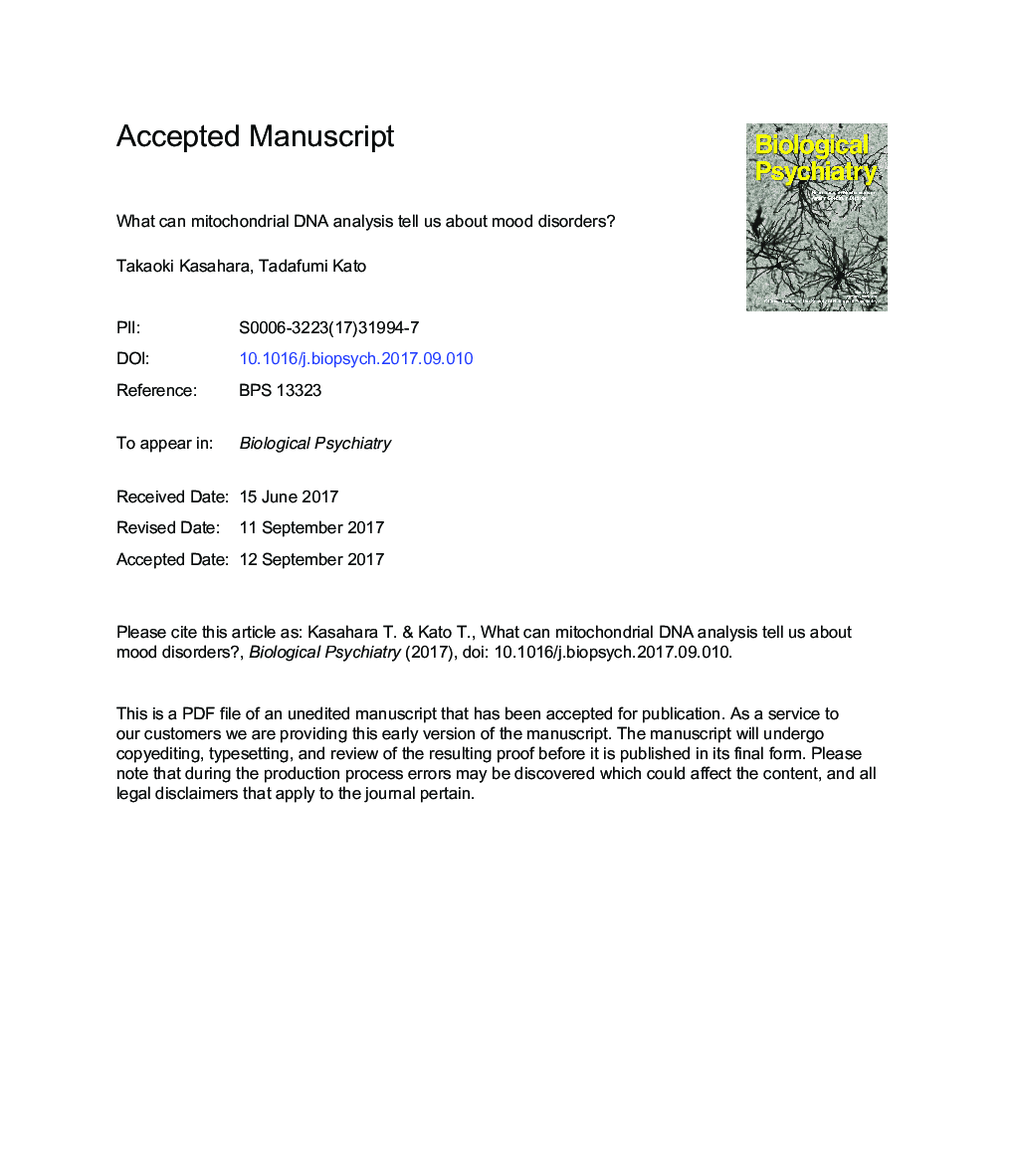| Article ID | Journal | Published Year | Pages | File Type |
|---|---|---|---|---|
| 8814005 | Biological Psychiatry | 2018 | 33 Pages |
Abstract
Variants in mitochondrial DNA (mtDNA) and nuclear genes encoding mitochondrial proteins in bipolar disorder, depression, or other psychiatric disorders have been studied for decades, since mitochondrial dysfunction was first suggested in the brains of patients with these diseases. Candidate gene association studies initially resulted in findings compatible with the mitochondrial dysfunction hypothesis. Many of those studies, however, were conducted with modest sample sizes (N < 1000), which could cause false positive findings. Furthermore, the DNA samples examined in these studies, including genome-wide association studies, were generally derived from peripheral tissues. One key unanswered question is whether there is an association between mood disorders and somatic mtDNA mutations (deletions and point mutations) in brain regions that accumulate a high amount of mtDNA mutations and/or are involved in the regulation of mood. Two lines of robust evidence supporting the importance of mtDNA mutations in brain tissues for mood disorders have come from clinical observation of mitochondrial disease patients who carry primary mtDNA mutations or accumulate secondary mtDNA mutations due to nuclear mutations and an animal model study. More than half of mitochondrial disease patients have comorbid mood disorders, and mice with neuron-specific accumulation of mtDNA mutations show spontaneous depression-like episodes. In this review, we first summarize the current knowledge of mtDNA and its genetics and discuss what mtDNA analysis tells us about neuropsychiatric disorders based on an example of Parkinson's disease. We also discuss challenges and future directions beyond mtDNA analysis toward an understanding of the pathophysiology of “idiopathic” mood disorders.
Keywords
Related Topics
Life Sciences
Neuroscience
Biological Psychiatry
Authors
Takaoki Kasahara, Tadafumi Kato,
